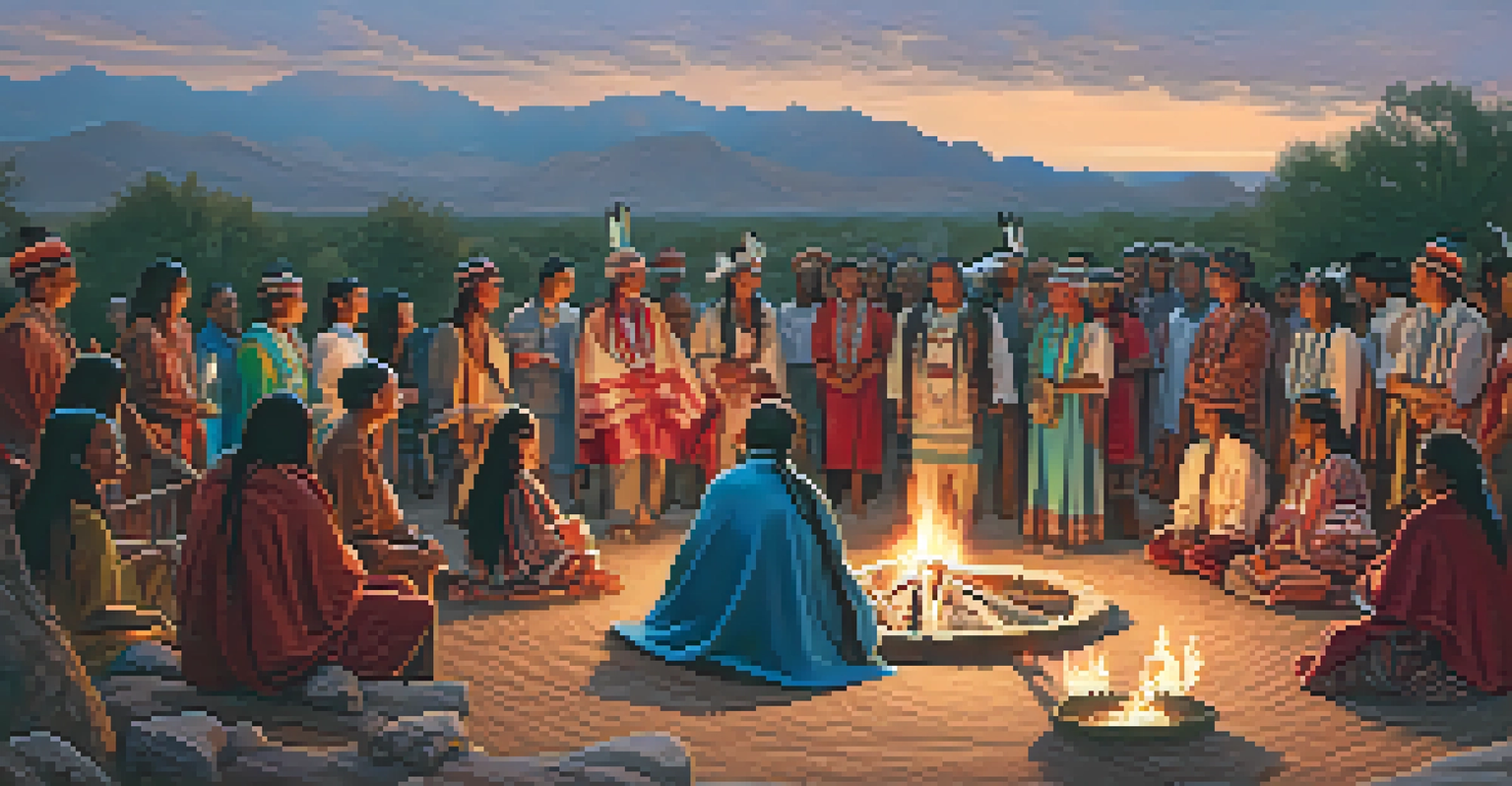Peyote, Religion, and Indigenous Rights: A Legal Perspective

Understanding Peyote and Its Cultural Significance
Peyote is a small cactus native to Mexico and the southwestern United States, known for its psychoactive properties. For many Indigenous peoples, particularly the Native American Church, peyote holds deep spiritual significance. It is used in religious ceremonies to facilitate connection with the divine and promote healing.
Peyote is a plant that has been used in spiritual practices for thousands of years, and it represents a profound connection to the earth and the divine.
This sacred plant has been utilized for centuries, representing more than just a means to achieve altered states of consciousness. It embodies a rich cultural heritage and is integral to various Indigenous traditions. Understanding this context is crucial when discussing legal rights and religious freedoms.
Yet, the use of peyote is often misunderstood outside these communities, leading to misconceptions about its role in Indigenous spirituality. It’s essential to approach this topic with respect and recognition of its importance to cultural identity.
Legal Framework Surrounding Peyote Use
The legal status of peyote in the United States is complex, shaped by both federal and state laws. The Controlled Substances Act classifies peyote as a Schedule I drug, making its use illegal outside of specific religious contexts. However, the American Indian Religious Freedom Act (AIRFA) provides exceptions for its use in religious ceremonies.

This legal framework aims to balance public health concerns with the rights of Indigenous peoples to practice their beliefs. Yet, the enforcement of these laws can vary significantly, leading to confusion and potential legal challenges. Understanding this landscape is vital for Indigenous groups advocating for their rights.
Peyote's Cultural Significance
Peyote serves as a sacred plant for Indigenous peoples, playing a vital role in their spiritual practices and cultural heritage.
Recent legal battles have highlighted the ongoing struggle for Indigenous peoples to maintain their cultural practices while navigating governmental regulations. This situation underscores the need for continued dialogue and legal reform.
The Role of the Native American Church
The Native American Church (NAC) plays a pivotal role in advocating for the religious use of peyote. Founded in the early 20th century, the NAC has worked tirelessly to ensure that Indigenous peoples can legally use peyote in their spiritual practices. This organization has been instrumental in navigating the complex legal landscape surrounding peyote use.
Cultural appropriation is not just about stealing symbols; it's about the erasure and exploitation of sacred traditions.
By uniting various tribes under a common cause, the NAC has strengthened the voice of Indigenous peoples in legal matters. Their efforts have led to significant legal protections, including exemptions from drug laws for religious use. This collective action exemplifies the power of community in the fight for rights.
However, challenges remain as some states impose restrictions that conflict with NAC teachings. The ongoing dialogue around peyote use is crucial for the future of Indigenous religious freedoms.
Contemporary Legal Challenges and Case Studies
Despite legal protections, Indigenous groups face numerous challenges in exercising their rights to peyote use. Recent court cases highlight the tension between state laws and federal protections. For instance, in the 2006 case of Gonzales v. O Centro Espirita Beneficente Uniao do Vegetal, the Supreme Court ruled in favor of a religious group using a different psychoactive substance, setting a precedent for peyote users.
These case studies illuminate the complexities within the legal framework, showcasing both progress and setbacks. They serve as reminders that while some legal victories have been achieved, the struggle for recognition and protection is ongoing. It’s a landscape marked by both hope and uncertainty.
Legal Rights and Challenges
The legal status of peyote is complicated, balancing federal laws with the religious freedoms of Indigenous communities.
Understanding these contemporary challenges is vital for anyone interested in Indigenous rights and religious freedoms. Staying informed can help support ongoing advocacy efforts.
The Impact of Cultural Appropriation
Cultural appropriation poses a significant threat to Indigenous practices, including the use of peyote. This phenomenon occurs when elements of a marginalized culture are adopted by members of a dominant culture without permission or understanding. Such actions can dilute the spiritual significance of peyote and undermine the rights of Indigenous peoples.
Many Indigenous advocates express concern that the commercialization of peyote use can lead to its exploitation. This situation raises ethical questions about who has the right to use these sacred plants and in what context. It’s essential to foster respect and understanding around these practices.
Addressing cultural appropriation is key to ensuring that Indigenous rights are upheld. This means recognizing the importance of consent and authenticity in cultural exchanges.
Future Directions for Indigenous Rights and Peyote
The future of peyote use within Indigenous communities rests on ongoing advocacy and legal reform. As awareness of Indigenous rights grows, there is potential for change in both public perception and legal frameworks. Increasingly, conversations about peyote are becoming part of broader discussions on social justice and environmental sustainability.
Collaboration between Indigenous communities and allies is essential for pushing for legal changes that honor traditional practices. This includes educating non-Indigenous people about the cultural significance of peyote and the importance of protecting Indigenous rights. Together, these efforts can foster a more inclusive society.
Cultural Appropriation Concerns
Cultural appropriation poses risks to Indigenous practices, potentially diluting the significance of peyote and undermining Indigenous rights.
Looking ahead, the path may be challenging, but with continued advocacy, there is hope for a future where Indigenous rights are fully recognized and respected.
Conclusion: The Importance of Respect and Understanding
In conclusion, the intersection of peyote, religion, and Indigenous rights is a complex and evolving issue. It requires a nuanced understanding of both cultural significance and legal challenges. By respecting Indigenous traditions and advocating for their rights, we can contribute to a more just society.
Engaging with these topics thoughtfully fosters a deeper appreciation for the struggles faced by Indigenous peoples. It encourages dialogue that can lead to meaningful change. As we navigate this landscape, let’s commit to listening and learning from those who have been historically marginalized.

Ultimately, recognizing the importance of peyote in Indigenous spirituality is not just about legal rights; it’s about honoring cultural identity and heritage. Together, we can work towards a future that respects and uplifts all voices.